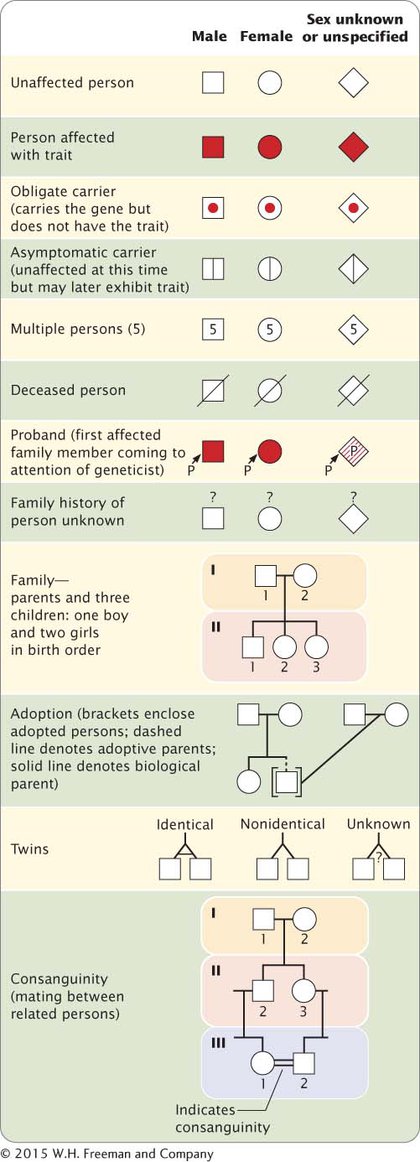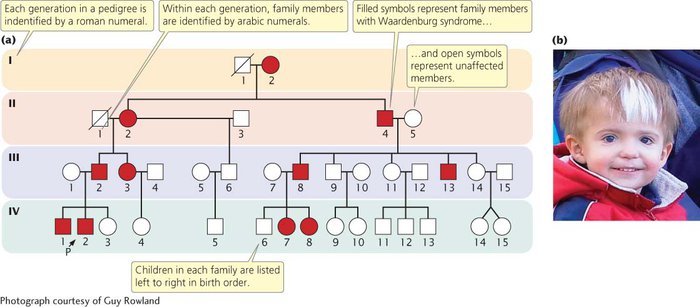Symbols Used in Pedigrees
The symbols commonly used in pedigrees are summarized in Figure 3.13. Males are represented by squares, females by circles. A horizontal line drawn between two symbols representing a man and a woman indicates a mating; children are connected to their parents by vertical lines extending below the parents. The pedigree shown in Figure 3.14a on p. 65 illustrates a family with Waardenburg syndrome, an autosomal dominant type of deafness that may be accompanied by fair skin, a white forelock, and visual problems (Figure 3.14b). An autosomal trait is one that is encoded on an autosome (nonsex chromosome). In Chapter 4, we will consider the inheritance of sex-


Persons in a pedigree who exhibit the trait of interest are represented by filled circles and squares; in Figure 3.14a, the filled symbols represent members of the family who have Waardenburg syndrome. Unaffected members are represented by open circles and squares. The person from whom the pedigree is initiated is called the proband and is usually designated by an arrow and sometimes with the letter P (IV-
Let’s look closely at Figure 3.14 and consider some additional features of a pedigree. Each generation in a pedigree is identified by a roman numeral; within each generation, family members are assigned arabic numerals, and children in each family are listed in birth order from left to right. Person II-